News & Views, Volume 44 | Data Driven Solutions for the Most Difficult Problems
By: Andrew Crompton and Mark Jaeger
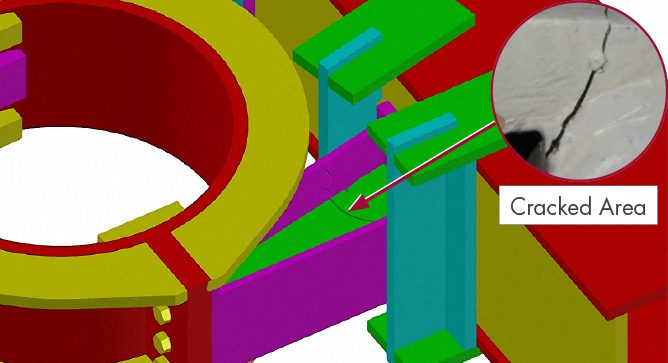
By: Andrew Crompton and Mark Jaeger

By: Scott Riccardella, Erica Fisette, and Bruce Paskett
 Structural Integrity (SI) has significant depth and expertise in current pipeline safety regulations and dedicates substantial resources to ensure a comprehensive understanding of proposed pipeline safety regulations. Using the most current insights relative to upcoming regulations, Structural Integrity guides our clients with strategic direction to best position their pipeline safety programs to comply with the new regulations. Structural Integrity takes a proactive role in attending key Pipeline and Hazardous Materials Safety Administration (PHMSA) meetings such as the Gas Pipeline Advisory Committee (GPAC) meetings as well as supporting the rulemaking efforts of the American Gas Association (AGA), Interstate Natural Gas Association of America (INGAA), Pipeline Research Council International (PRCI) and other key associations.
Structural Integrity (SI) has significant depth and expertise in current pipeline safety regulations and dedicates substantial resources to ensure a comprehensive understanding of proposed pipeline safety regulations. Using the most current insights relative to upcoming regulations, Structural Integrity guides our clients with strategic direction to best position their pipeline safety programs to comply with the new regulations. Structural Integrity takes a proactive role in attending key Pipeline and Hazardous Materials Safety Administration (PHMSA) meetings such as the Gas Pipeline Advisory Committee (GPAC) meetings as well as supporting the rulemaking efforts of the American Gas Association (AGA), Interstate Natural Gas Association of America (INGAA), Pipeline Research Council International (PRCI) and other key associations.
The GPAC is a statutorily mandated Committee that advises PHMSA on proposed gas pipeline safety standards and regulations. The Committee consist of members from Federal and State governments (PHMSA and National Association of Pipeline Safety Representatives or NAPSR), the regulated industry, and the general public. The Committee is responsible for reviewing the technical feasibility, reasonableness, cost-effectiveness, and practicability of proposed standards and regulations relative to pipeline safety. The goal of the Committee is to provide recommended revisions and/or actions in response to standards and/or regulations proposed by the Federal Department of Transportation (DOT)/ PHMSA.
By: Jason Van Velsor, Joe Agnew, and Owen Malinowski
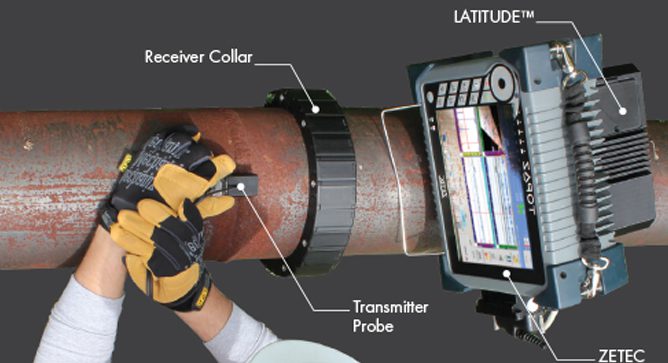
The course of action taken was to perform local stress analysis and remaining life estimates for the downstream (outlet) connections of the valves to assess likelihood of future damage and establish an appropriate re-inspection interval. Detailed metallurgical analysis was also performed on a ring (entire circumference) section removed from one of the upstream welds (which exhibited both surface and volumetric indications in the weld metal) in order to provide insight into the damage mechanism and inform the stress analysis and remaining life estimates.
By: Ben Ruchte
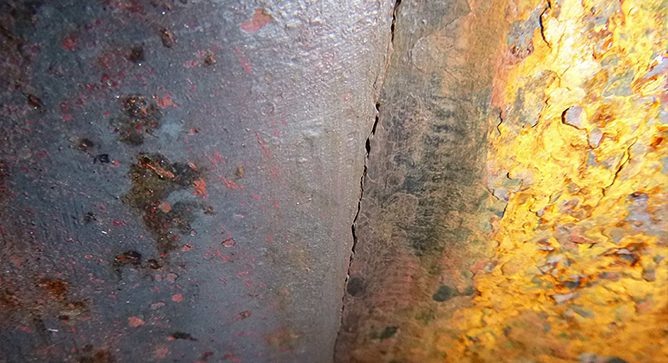
The course of action taken was to perform local stress analysis and remaining life estimates for the downstream (outlet) connections of the valves to assess likelihood of future damage and establish an appropriate re-inspection interval. Detailed metallurgical analysis was also performed on a ring (entire circumference) section removed from one of the upstream welds (which exhibited both surface and volumetric indications in the weld metal) in order to provide insight into the damage mechanism and inform the stress analysis and remaining life estimates.
By: Terry Herrmann
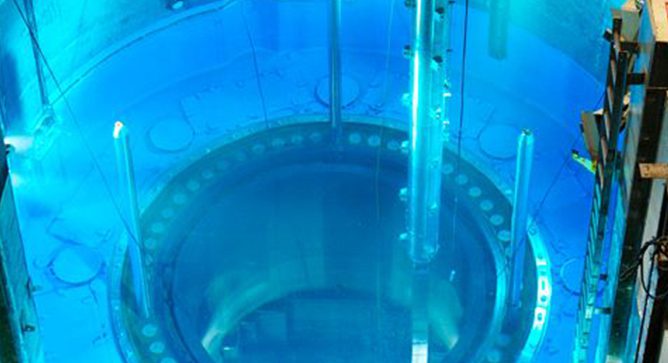
By: Terry Totemeier
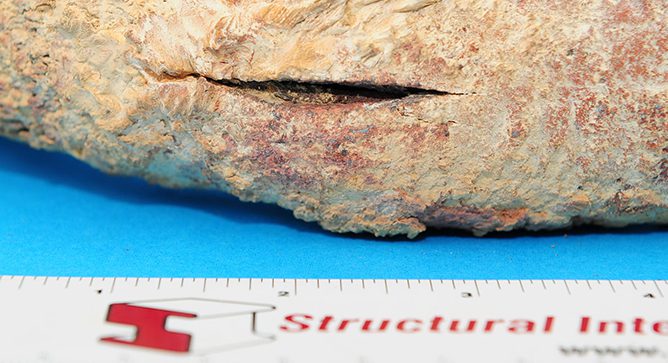
Mechanism
The mechanism of failure for LTOC is simply the accelerated accumulation of creep damage in the component over a span of time that is well short of the anticipated design life, but sufficiently long that creep is the dominant damage mode. This damage is typically associated with the operation of the tube above the oxidation limit for the material involved. This has two effects, which both contribute to long-term creep failure: reduction in wall thickness due to oxidation loss, and build-up of oxide on the tube internal surface, which insulates the tube from the cooling effect of the steam, leading to increasing tube metal temperatures over time.
By: Ed Dougherty and Al Jarvis
for Bottom Tubesheet Filter/Demineralizers Initial Installation and Performance at Browns Ferry Nuclear Statio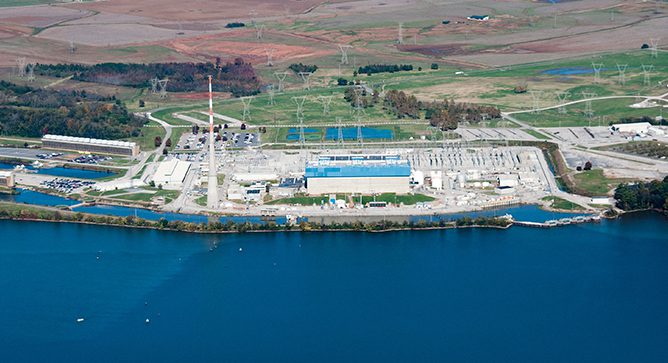
Each BFNS unit is currently designed with ten bottom tubesheet condensate filter/demineralizers (CF/Ds) in the condensate treatment system that require an application of a powdered resin precoat to perform the function of demineralization. The precoat material is applied as an overlay on top of vertical filter septa. The filter septa have an inner pleated area, and with a precoat overlay, perform the function of demineralization as well as particulate iron removal. In the absence of circulating water leakage into the condenser, the primary function of the CF/Ds is to remove particulate iron that collects in the condenser hotwell. The iron source is from the corrosion of carbon steel piping and components in contact with main steam and heater drain systems.
By: Lance Barton and Tom Pickthall (EnhanceCo)
REGULATORY OVERVIEW
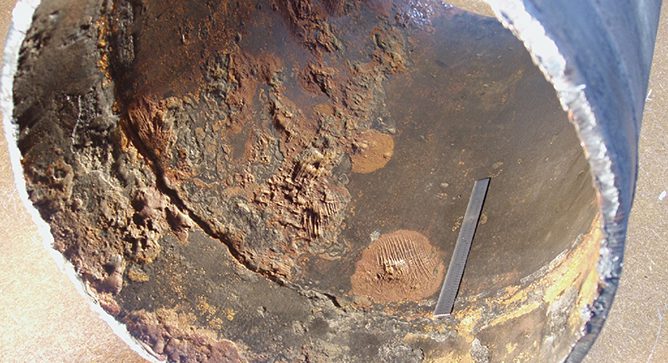
This bulletin and NPRM reinforce the requirements of CFR part 192-subpart O, Section 192.937, requiring gas pipeline operators to continuously assess their pipelines for the threat of internal corrosion as part of their overall integrity management program. One of the requirements is to determine if the gas entering the system is corrosive or not corrosive. The optimal way to prove that the gas is not corrosive is to build a thorough continuous monitoring program that considers guidance from the NPRM and the advisory bulletin.
By: Terry Totemeier
Introduction
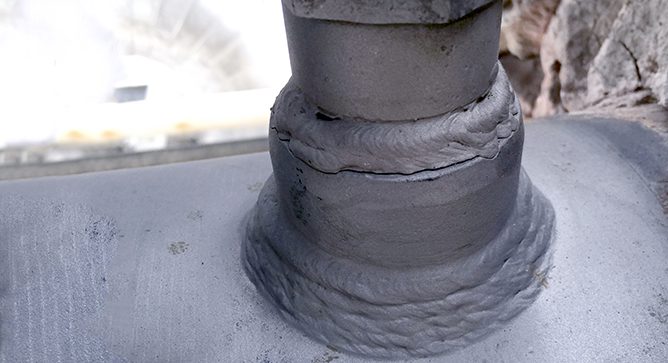
With the now widespread use of Grade 91 steel (9Cr-1Mo-V-Nb) for elevated-temperature applications in modern power plants, DMWs involving this material have become common, and increasing service experience has revealed some unique characteristics and failure mechanisms, especially in thicker-section DMWs with austenitic materials. This article presents a short overview of Grade 91 DMWs: their design, fabrication, and failure, with emphasis on current industry issues.
There are two basic classes of DMWs in Grade 91 steel: ferritic-to-ferritic and ferritic-to-austenitic. The first type corresponds to Grade 91 welded to another ferritic steel with a lower chromium content, such as Grade 22; the second type corresponds to Grade 91 welded to an austenitic stainless steel such as TP304H. Each of these types has unique concerns and considerations.
By: Matt Freeman
Expanding Capabilities in Condition-based Pressure-part Integrity Management
Structural Integrity and GP Strategies recently announced an agreement to bring SI’s technology for calculating, tracking, and trending life consumption of piping and boiler components to GP Strategies EtaPRO real-time monitoring platform (Press release here). SI has a long history with creep and fatigue damage monitoring applications, most recently with the suite of applications available as part of SI’s PlantTrack platform. The partnership with GP Strategies brings that technology to EtaPRO, which is used worldwide by power-generating organizations to monitor the performance and reliability of their generation assets.
EtaPRO users will benefit from easy integration of SI’s leading-edge Boiler and Piping Component Reliability (BPCR) modules to quantify damage to high-pressure, high-temperature components such as tubing, piping, headers, and desuperheaters. The BPCR modules track and trend accumulated creep and fatigue damage in real time using SI’s proprietary algorithms that combine actual operating data and material condition with a plant’s specific configuration. Plant operators can use the resulting life consumption estimates to guide asset management decisions, such as changes in operating procedures, targeted inspections, or off-line analysis of anomalous conditions.
SIGN UP FOR OUR NEWSLETTER
*Join the conversation. Sign up to receive emails, events, and latest information!
1-877-4SI-POWER
(1-877-474-7693)
This site uses cookies. By continuing to browse the site, you are agreeing to our use of cookies.
OKLearn MoreWe may request cookies to be set on your device. We use cookies to let us know when you visit our websites, how you interact with us, to enrich your user experience, and to customize your relationship with our website.
Click on the different category headings to find out more. You can also change some of your preferences. Note that blocking some types of cookies may impact your experience on our websites and the services we are able to offer.
These cookies are strictly necessary to provide you with services available through our website and to use some of its features.
Because these cookies are strictly necessary to deliver the website, refusing them will have impact how our site functions. You always can block or delete cookies by changing your browser settings and force blocking all cookies on this website. But this will always prompt you to accept/refuse cookies when revisiting our site.
We fully respect if you want to refuse cookies but to avoid asking you again and again kindly allow us to store a cookie for that. You are free to opt out any time or opt in for other cookies to get a better experience. If you refuse cookies we will remove all set cookies in our domain.
We provide you with a list of stored cookies on your computer in our domain so you can check what we stored. Due to security reasons we are not able to show or modify cookies from other domains. You can check these in your browser security settings.
These cookies collect information that is used either in aggregate form to help us understand how our website is being used or how effective our marketing campaigns are, or to help us customize our website and application for you in order to enhance your experience.
If you do not want that we track your visit to our site you can disable tracking in your browser here:
We also use different external services like Google Webfonts, Google Maps, and external Video providers. Since these providers may collect personal data like your IP address we allow you to block them here. Please be aware that this might heavily reduce the functionality and appearance of our site. Changes will take effect once you reload the page.
Google Webfont Settings:
Google Map Settings:
Google reCaptcha Settings:
Vimeo and Youtube video embeds:
The following cookies are also needed - You can choose if you want to allow them:
You can read about our cookies and privacy settings in detail on our Privacy Policy Page.
